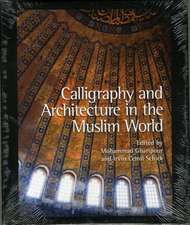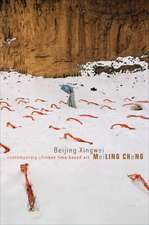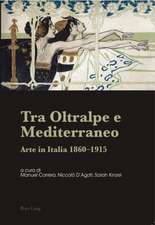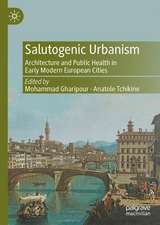Persian Gardens and Pavilions: Reflections in History, Poetry and the Arts
Autor Mohammad Gharipouren Limba Engleză Paperback – 8 iul 2020
Preț: 238.05 lei
Preț vechi: 300.87 lei
-21% Nou
Puncte Express: 357
Preț estimativ în valută:
45.56€ • 47.38$ • 38.13£
45.56€ • 47.38$ • 38.13£
Carte disponibilă
Livrare economică 21 februarie-07 martie
Preluare comenzi: 021 569.72.76
Specificații
ISBN-13: 9780755600366
ISBN-10: 0755600363
Pagini: 256
Ilustrații: 64 colour illus, 30 bw illus
Dimensiuni: 189 x 246 x 23 mm
Greutate: 0.7 kg
Editura: Bloomsbury Publishing
Colecția I.B.Tauris
Locul publicării:London, United Kingdom
ISBN-10: 0755600363
Pagini: 256
Ilustrații: 64 colour illus, 30 bw illus
Dimensiuni: 189 x 246 x 23 mm
Greutate: 0.7 kg
Editura: Bloomsbury Publishing
Colecția I.B.Tauris
Locul publicării:London, United Kingdom
Caracteristici
Takes an original approach - using material and literary sources to address aspect of architectural history.
Notă biografică
Mohammad Gharipour is professor at the School of Architecture and Planning at Morgan State University. The recipient of the Hamad Bin Khalifa Fellowship in Islamic Art and the Spiro Kostof Fellowship Award from the Society of Architectural Historians, Gharipour has published extensively on architectural history. He is the the author of Gardens of Renaissance Europe and the Islamic Empires, Synagogues of the Islamic World, and Historiography of Persian Architecture and is editor of 'Bazaar in the Islamic City' (2012) and the founding editor of the 'International Journal of Islamic Architecture'.
Cuprins
List of IllustrationsAcknowledgementsChapter 1: IntroductionChapter 2: The Garden and Pavilion in Near Eastern Pre-Islamic Texts, the Qur'an and Persian PoetryChapter 3: The Garden and Pavilion in Persian ArtChapter 4: The Garden and Pavilion through the Lens of Travelers and HistoriansChapter 5: ConclusionMatrixGlossary of TermsPoets, Historians and TravellersNotesBibliographyIndex
Recenzii
Mohammad Gharipour's fine book focuses on Persian gardens and the permanent or temporary structures within them, during the period from the fifteenth through the eighteenth centuries, but includes a useful concise survey of references to gardens in earlier literature stretching back to ancient Sumer, the Bible and the Qur'an. A scholarly book, it includes extensive apparatus of glossary, notes and sources, and 100 illustrations, many in color, generally of high quality and beautiful to study. It relies heavily on textual sources, including histories and poetry and travelers' accounts especially, and also pictorial sources, especially manuscript illuminations. Its wide scope seeks to set the garden in its social and historical context as a place for meetings and display and pleasure, as well as sometimes places of production. It goes beyond earlier treatments of the theme, including even color visualizations of Haravi's proposal for a "paradise" garden in the fifteenth century, and has systematic investigations of many questions, especially in regard to structures, such as tents, or thrones in gardens, and also discusses what can be said about the types and arrangements of plants."
Much has been written about Islamic gardens and Islamic architecture. Mohammad Gharipour usefully discusses the relationship between the two.the contents are clearly arranged.
Much has been written about Islamic gardens and Islamic architecture. Mohammad Gharipour usefully discusses the relationship between the two.the contents are clearly arranged.











